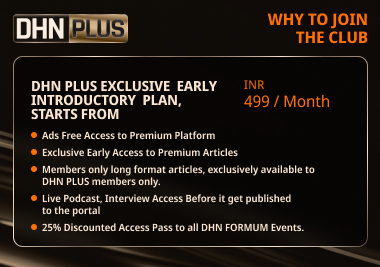HISTORY MATTERS: Disseminating Medical Literature & Knowledge in India in the 1980s

For 2023, Google reported that 7% of all daily searches are health-related, with 70,000 healthcare searches performed every minute. Between 2019 and 2020, medical app downloads increased by 50%, reaching a total of 3.2 billion downloads.
The informed netizen of today is in a state of information overload. With 960 million broadband subscribers and an urban and rural tele density of 138% and 60%, respectively, India is already the second-largest online digital market.
Today, in theory, medical journals and textbooks can be accessed by anyone, anytime, anywhere, and at affordable rates.
Fifty-six years ago, when the authors entered medical school, the use of computers in medical education was unknown in India, as in other parts of the world. It was in this milieu, thirty-nine years ago, that eleven young Madras (Chennai) based doctors decided to make medical literature accessible, particularly to clinicians in suburban and rural India.
The aim was to make relevant, affordable reprints, easily available to the practitioner at their place of work or study. Photocopying and using the postal service was the only available mode of operation. At that time, the processes deployed appeared relevant and truly innovative.
Over the ensuing years, developments in Information Technology made the services we provided, redundant. Extensive revolutionary changes such as universal digitization and the availability of a cost-effective Internet radically changed how medical literature could be accessed in India.
At that time it was felt that abstracts prepared by doctors practicing in India would be more relevant, pertinent, and comprehensible to Indian practitioners.
Each month, the society would send subscribers, a classified listing of information available in the library of periodicals, that the society had in its collection. Volunteers were highly motivated specialists with postgraduate degrees. Theoretically, every subscriber could soon build a personal library of focused, customized, relevant information.
Distribution of hard copies of published material on specific request, using the government postal service, may now appear quixotic in the highly digitized world we live in today. Today a world without Internet, email. Whatsapp etc is unthinkable.
The Society for Medical Learning and Resources Transfer was an example of a well-intentioned endeavor that was rapidly upstaged, like many other areas of activity, due to unforeseen radical advances in Information and Communication Technologies in the digital era. The changes show no signs of abating.
Looking back at the efforts made, it seems to have served a purpose during a brief period with relevance to published material. Several of the founders of the organization have gone on to become leaders in the teaching arena and continue to disseminate medical knowledge. They believe that SMLRT created awareness on the importance of journal reading at a time when journals were inaccessible to the average practitioner.
To quote Greenberg, “As custodians of the past, we bear the responsibility of collecting, preserving, organizing, making accessible, and (at some level) interpreting the historical materials in our care”
SMLRT put together monthly capsules summarizing articles in 25 core publications like BMJ, NEJM, JAMA, etc. A list of 100+ papers published in important journals was made available monthly along with abstracts of current literature on printed 13 x 8 cm index cards. Photocopies of any paper listed and requested for (through post) using a preprinted copy request form were delivered by post within a week at ₹0.50 per page (An eight-digit number referred to the article. Prepaid tokens (one per page) were to be enclosed with the request. The annual subscription was Rs 150.
Video learning sessions: SMLRT then ventured into another form of knowledge dissemination. It acquired a collection of approximately 300 video cassettes covering various disciplines in medicine and surgery (Figure 3).
These were used during educational sessions, titled Video Clinics, at an auditorium, with a panel of experts available to answer questions. A library of 300+ medical videos cataloged in 15 different specialties and super specialties was used for video sessions with experts.
We felt at that time that Knowledge transfer was more important than knowledge itself. Knowledge transfer needs to be supported by user-friendly materials and a communication strategy that enhances the credibility of the transferor, producing customer delight in the transferee.
The world has since turned upside down. We are drowning in information but have difficulty in accessing necessary, relevant, focused knowledge.
Two hundred years ago, Samuel Johnson remarked: “There are two types of knowledge. One is knowing a thing. The other is knowing where to find it.”
In the 1980s, living in an analogue world in what was then described as “the third world,” the founders of SMLRT believed and took baby steps to implement Johnson’s remarkable prophecy of the future.
Today, Google notwithstanding, or perhaps because of the plethora of search engines, no clinician can be familiar with current knowledge if they are not familiar with search strategies. Those who do not remember the past are condemned to repeat it. Hopefully, this journey into the past will be useful.
This blog is a synopsis of an article published earlier. The author acknowledges the significant role played by the co-authors in making this project happen four decades ago.
Ganapathy K, Rajagopalan A, Arjun G, Suresh S, Sriram K. Disseminating medical literature and knowledge in India in the 1980s: the SMLRT story. J Med Libr Assoc. 2022 Jan 1;110(1):146-151. doi: 10.5195/jmla.2022.1424. PMID: 35210976; PMCID: PMC8830371.
Figure 1 Pamphlet explaining services offered by SMLRT

Fig 2 Illustrations of 13 x 8 cm index cards containing abstracts

Figure 3 Sample list of titles of video cassettes

Stay tuned for more such updates on Digital Health News




















